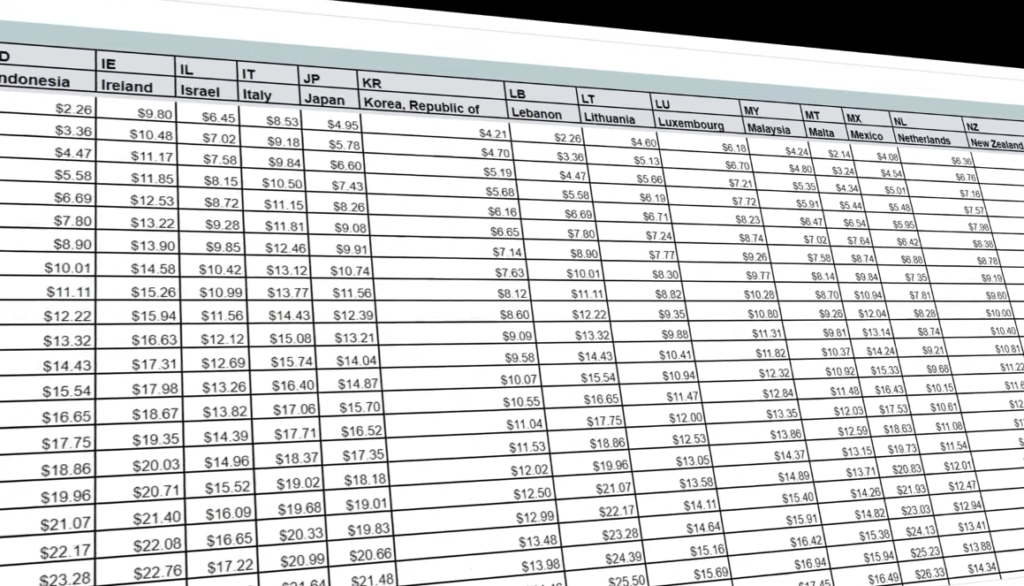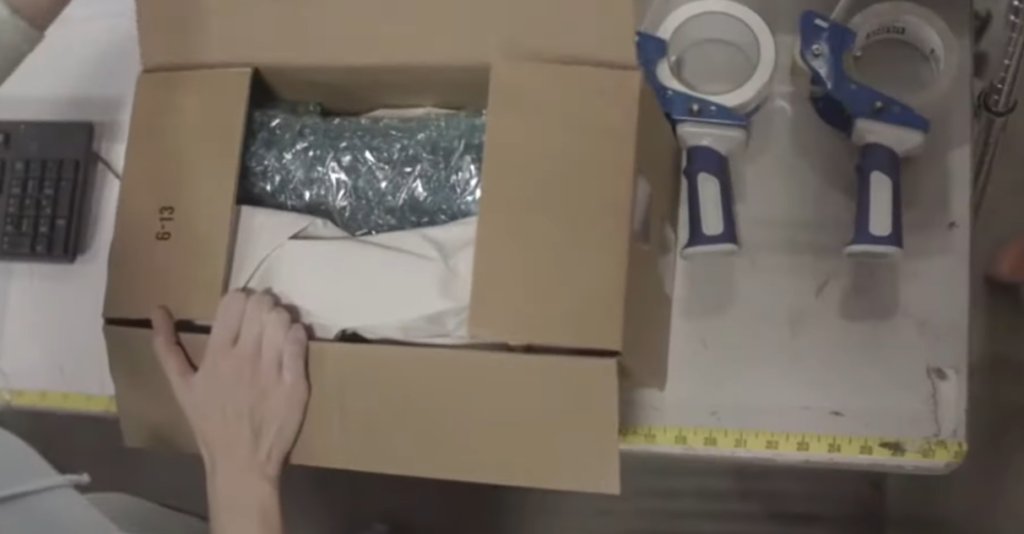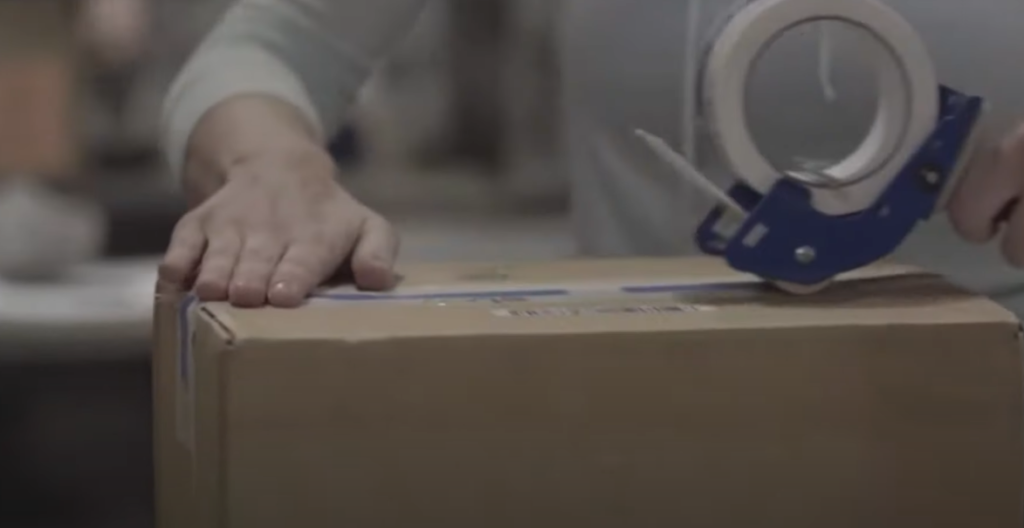In this comprehensive guide, we’ll answer the question of whether you can ship electronics internationally. We’ll cover what items are considered electronics, what restrictions might apply to shipping them, and how to package your electronics for an international shipment. Plus, we have a few tips on how to save on your international shipping costs!
Is it Possible to Ship Electronics Internationally?
There are a few reasons you might need or want to ship electronics internationally. Maybe you’re moving overseas for work or retirement and want to take your favorite gadgets with you. Or maybe you’ve just found the perfect electronic item on an online marketplace from another country and want to have it shipped to you.

But is it actually possible to ship electronics internationally? The short answer is yes, but there are a few things you need to know before you do.
Regulations Regarding International Shipment of Electronics
First and foremost, you need to be aware of any regulations regarding the shipment of electronics from one country to another. Depending on the countries involved, there may be restrictions on what types of electronics can be shipped and how they must be packaged.
Double check the shipping rules of country of destination
The last thing you want is for your shipment to be confiscated or returned because it doesn’t comply with regulations.
Usually, shipping within the EU-member states is much easier than sending something from the US to another country, since there are no duties or taxes for most items.
India is especially strict when it comes to shipping electronics. For example, if you want to ship a mobile phone to India, it must have its IMEI number clearly displayed on the outside of the package.
What’s more, most electronics require a special documentation called an “invoice” in order to be cleared through customs. This document must list the value of the electronics being shipped, as well as a description of what they are.
If you are shipping to another country, you should label your goods as Unaccompanied Personal Effects (UPE) or Personal Effects (PE).
This includes everything from clothes and toiletries to books and electronics.

However, there are some restrictions on what can be classified as UPE. For example, items that are for resale or commercial use cannot be included.
The benefits of shipping your electronics as UPE is that you won’t have to pay duty or taxes on them in most countries of destination! [1], [2], [3]
Consider using a freight forwarder
If you’re not familiar with the process of shipping internationally, you may want to consider using a freight forwarder. A freight forwarder is a company that specializes in arranging international shipments and can help ensure that your shipment is properly packaged and labeled and that all necessary documentation is in order.
Insure coverage for shipping electronic goods
It’s also important to make sure that your electronics are properly insured for the journey. Shipping companies typically offer some level of insurance, but it may not be enough to cover the full value of your electronics in the event that they are lost or damaged in transit. [1]
Don’t forget about the taxes and duties
When shipping electronics internationally, you also need to be aware of taxes and duties that may apply. These can vary significantly from country to country, so it’s important to do your research in advance. Depending on the value of the item you’re shipping, you may also be required to pay import VAT or other fees.
For example, if you’re shipping an iPhone from the United States to Canada, you’ll need to pay a duty of around 5% on the value of the phone. However, if you’re shipping the same phone from the United States to Europe, you’ll likely be required to pay VAT in addition to any duties that may apply. [1], [3]
Choose a reliable logistics provider to handle the shipment
When it comes to actually shipping your electronics, you’ll want to choose a reliable logistics provider that has experience with this type of shipment. They’ll be able to help you navigate any regulations and ensure that your electronics arrive safely at their destination. [1]
Fill custom forms carefully
Be sure to accurately declare the contents of your shipment, as well as its value. If you are unsure about how to fill out the form, it is best to ask someone at the shipping company for help. Any mistakes could result in delays or even the return of your shipment.
And don’t try to decrease the value of your electronics to avoid paying taxes or duties – this is considered customs fraud and can result in serious penalties. You don’t want your device to be seized or for you to be slapped with a hefty fine. [1], [3], [4]
Stay within the import limit
Be aware of the import limit of the country you are shipping to. This is the maximum number of items you are allowed to ship in a single shipment. If you go over this limit, your shipment may be subject to delays or even be refused.

And it’s not only the number of items that count towards the import limit. The total value of your shipment also plays a role. So if you’re planning on shipping multiple high-value items, keep this in mind. [3]
Tips on Shipping Electronics Internationally
Now that you know the basics of shipping electronics internationally, it’s time to get into the nitty-gritty details. Here are a few tips to make sure your electronics arrive at their destination safely and without any hiccups.
Do not remove Lithium-ion batteries
One of the most important things to remember when shipping electronics internationally is to never remove the lithium-ion batteries.
As you probably know, almost all electronics contain lithium-ion batteries. What you might not know is that these batteries are classified as dangerous goods by the International Air Transport Association (IATA). That means they can’t be transported by air unless they meet certain safety requirements.
The charge they hold makes them a fire hazard, and if they’re damaged, they can release toxic chemicals. That’s why the IATA has strict rules about how lithium-ion batteries must be packaged and labeled when they’re shipped by air.
So it’s absolutely prohibited to transport lithium-ion batteries that have been removed from the devices they power. So, if you’re planning on shipping electronics internationally, make sure to leave the batteries in place. If the state of charge of the battery is below 30%, however, you can ship the battery without declaring it as dangerous goods. But even then there’s a small risk of fire.
Avoid using packaging foam
Lithium-ion batteries aren’t the only fire hazard when it comes to shipping electronics. Packaging foam, also known as polystyrene, is another material you’ll want to avoid using.
If these beads are exposed to high temperatures, they can easily catch fire and cause an explosion. It’s also not good for the environment, as it takes centuries to decompose.
Instead of using packaging foam, opt for recycled paper or biodegradable packing peanuts. These materials are much safer and better for the environment. [1], [2], [4], [5]

How to Pack Your Electronics Properly
As you may know by now, electronics are some of the most delicate items you can ship. They are also some of the most common items that need to be shipped, whether you’re an individual or a business.
This is why along with formality tips on international shipment, it’s important to know how to pack them properly. Below we will discuss the best ways to do so in detail!
Use original packaging if possible
Your first instinct might be to use recycled materials to save money on shipping costs, but this is not always the best idea – especially when it comes to electronics.
Oftentimes, the original packaging that your electronic devices came in is specially designed to protect them from damage during shipping. This means that it will most likely provide better protection than any makeshift box or container you could come up with.
Segregate parts of your devices
Whether you are shipping a computer, a phone, or any other type of electronic, you should always take it apart before packing it. This way, each piece is better protected against shocks and other damage that could occur during transit.
You should also put protective measures between different parts. For example, if you are shipping a laptop, put the charger in a separate box from the body. This will further reduce the risk of damage.
Bundle the wires together
Wires can easily become tangled, especially if they’re all different lengths. To avoid this, simply bundle them together with a twist tie, rubber band, or even tape. This will not only keep them from getting tangled, but it will also make the overall package smaller and easier to ship.
Use bubble foam
Padding is key when it comes to packing electronics for shipment. You want to make sure that your items are well-protected against falls, bumps, and other accidents that can occur during transit.
Bubble foam is one of the most popular ways to protect electronics during shipping. All you need to do is place your item in the center of a sheet of bubble foam and then fold the edges over so that it’s completely covered.
Once you have done this, you can then put the bubble foam in a box with other items or on its own. The key is to make sure that there is no way for the item to move around inside the box so that it doesn’t get damaged during transit.
The benefit of bubble foam is that it’s perfectly safe for air transportation, and you won’t have to worry about your items getting damaged by the TSA.
Store your electronics snugly in their packaging
You don’t want your precious items to be damaged in transit, so the crucial step is to store them snugly in their packaging. This will help to ensure that they don’t get jostled around too much and suffer any damage as a result.
Start by placing the biggest item in the center of the box, and then fill in any gaps with smaller items. Place cardboard dividers between each item if necessary, and place some sort of cushioning between the walls of the box and the electronics. This can be anything from bubble wrap to paper.
Once everything is snugly in place, close up the box and seal it with heavy-duty packing tape. Make sure that the tape is applied evenly across all seams to reinforce them as much as possible.
Consider double-boxing your electronics
If you want to be extra careful with your electronics, you can always double-box them. This simply means placing the box containing your electronics inside of another box. This way, if the otterbox happens to get damaged, the inner box will still provide some protection for your items.
To double-box your electronics, simply place the first box inside of the second one and then fill any gaps with packing material. Once everything is in place, seal up the box with tape and label it accordingly.

Label your box as fragile
This one seems like a no-brainer, but you’d be surprised how many people forget to do it. By clearly marking your box as fragile, you ensure that the handlers will take more care with it.
You can use regular packing tape or brown craft paper to write “FRAGILE” in big letters. You can also buy pre-made fragile stickers at most shipping stores. [1], [2], [4], [5]
FAQ
What are the risks of shipping electronics internationally?
To minimize this risk, you should always ship your electronics with a reputable shipping company that offers tracking and insurance.
Can you ship electronics between different countries?
Yes, you can ship electronics between different countries, but there are a few things to keep in mind. First, you’ll need to make sure that the country you’re shipping to allows electronic shipments. Some countries have restrictions on what types of electronics can be imported, so it’s important to check before you ship. Second, you’ll need to ensure that your electronics are properly packed and protected from damage during shipping. Finally, you’ll need to choose a reputable shipping company that offers reliable service and insurance in case your shipment is lost or damaged in transit.
Is it safe to ship electronics?
Yes, shipping electronics is safe when done correctly. Properly packing and labeling your shipment will help ensure that your items arrive safely at their destination. And for international shipments, using a reputable shipping company with experience in shipping electronics is always best.
Can electronics be shipped from the USA to India?
Yes, you can ship electronics from the USA to India. In fact, many online retailers will ship electronic items to India without any issues. We suggest you use an international package delivery service that can provide you with a tracking number so you can keep an eye on your shipment.
And don’t forget about duties! When shipping electronics to India, you will need to pay import duties and taxes on the value of the goods. The Indian government has a duty calculator on its website that can help you estimate the amount you will need to pay.
India also has restrictions on what types of electronics can be imported into the country. For example, you cannot import air conditioners unless you have a special import license.
Useful Video: Cheapest Way to Ship Internationally – How-to & More
Conclusion
As you can see, there are a few important things to keep in mind when shipping electronics internationally. But there’s a lot of things you must take into account when you’re sending these items. For one, the shipping restrictions and regulations from the country of origin and the destination. You’ll also need to make sure that your electronics are properly packaged to avoid any damage during transit. This means using bubble wrap or another form of padding to protect the item from damage during transit. You will also want to make sure that the item is properly labeled with all of the necessary information, including your contact information and the destination address.
If you’re still unsure about whether or not you can ship electronics internationally, we recommend checking the official gov website. More often than not, they have the most up-to-date and accurate information.
Taxes and duties are also something you’ll need to consider when shipping electronics internationally. These can vary depending on the country, so it’s best to check with officials beforehand.
We hope you found this guide helpful. If you have any further questions, please feel free to leave a comment below or contact our customer support team. Happy shipping!
References
- https://www.dhl.com/discover/en-sg/e-commerce/logistics/how-to-pack-and-ship-electronics
- https://www.qafila.com/how-to-ship-electronic-goods-internationally-by-air/
- https://www.tajtravel.com/blog/shipping-and-custom-rules-for-electronics-from-usa-to-india
- https://parcelbroker.co.uk/articles/top-five-tips-for-sending-electronics-abroad/
- https://www.eurosender.com/en/international-electronics-shipping














Leave a Reply